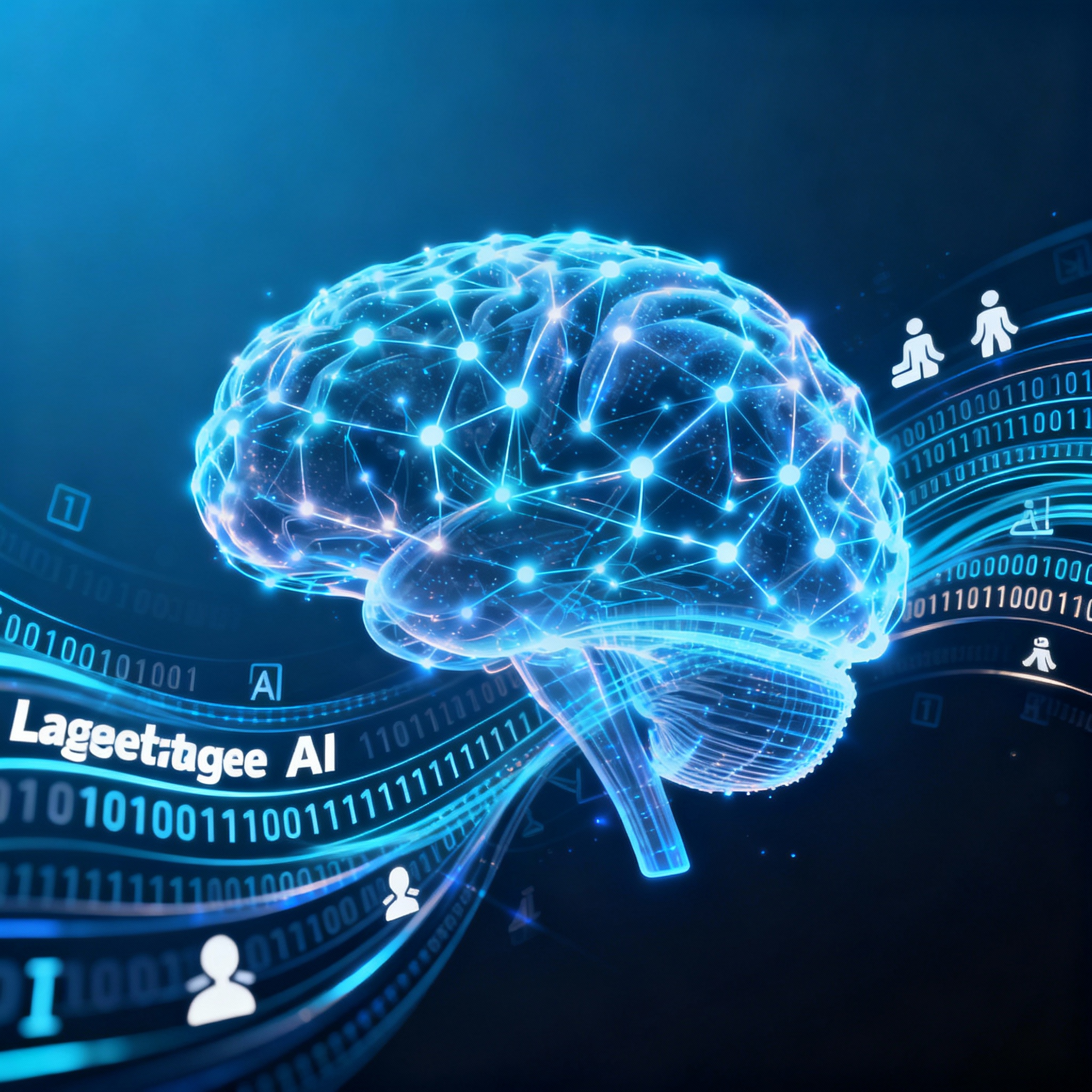Artificial Intelligence (AI) has become a transformative force in technology, with Large Language Models (LLMs) standing at the frontier of this revolution. LLMs are sophisticated AI systems designed to understand, process, and generate human language. They are trained on vast amounts of text data, enabling them to engage in various language-related tasks such as writing, translating, summarizing, and answering complex questions. These models have become integral to many applications used daily, powering chatbots, virtual assistants, content creation tools, and much more.
What is AI and Large Language Models (LLM)?
Artificial Intelligence is a broad field of computer science focused on creating machines that can perform tasks requiring human intelligence. These tasks include learning from experience, recognizing patterns, problem-solving, and making decisions. AI systems range from simple rule-based programs to complex networks that mimic brain functions.
Within AI, Large Language Models are a specialized type that focuses on understanding human language. They operate by processing enormous datasets that include books, articles, websites, and other textual information to learn the structure, context, and nuances of language. Using neural networks, particularly transformer architectures, LLMs analyze input text by breaking it down into smaller units called tokens. Through attention mechanisms, they understand the context and relationships between these tokens to generate coherent and contextually relevant outputs.
These models are capable of producing text that resembles human writing, making them incredibly versatile. Examples include OpenAI’s GPT series, Google’s Gemini, and Meta’s Llama models. They can be used for tasks such as drafting emails, generating creative stories, helping programmers write code, or facilitating customer service interactions.
What is Generative AI?
Generative AI (Gen AI) is a subset of artificial intelligence focused on creating new content rather than simply analyzing or categorizing existing data. Unlike traditional AI systems that might classify images or translate languages, generative AI produces entirely new outputs. These outputs can be text, images, music, or even video, depending on the underlying technology.
LLMs are at the core of text-based generative AI, enabling machines to write essays, answer questions, and simulate conversations with remarkable fluency. Generative AI models learn patterns from huge datasets and apply this knowledge to generate original content. This capability is driving innovation across industries, including education, entertainment, marketing, and software development.
Generative AI’s ability to personalize content and produce creative works is creating new opportunities for businesses and individuals alike. For example, writers use it for brainstorming ideas, designers generate unique visuals, and customer support teams deploy AI chatbots powered by generative models to enhance user experience.
Machine Learning and Deep Learning
Machine Learning (ML) is a critical part of AI that focuses on training models to learn from data. Instead of explicit programming, ML systems improve their performance by identifying patterns and relationships within datasets. This approach allows systems to adapt to new information and solve problems more flexibly.
Deep Learning is an advanced form of machine learning that uses multiple layers of artificial neural networks to model complex patterns. These networks resemble the human brain’s structure, consisting of interconnected nodes or neurons that process information in layers. Deep learning models excel in uncovering intricate relationships within vast amounts of data, making them ideal for tasks such as image recognition, speech processing, and natural language understanding.
Large Language Models leverage deep learning techniques, particularly transformer architectures, to process and generate human language. Transformers enable LLMs to understand context better by attending to different parts of the input data simultaneously, which leads to more coherent and context-aware outputs.
To put it simply:
-
AI is the broad science of creating smart machines.
-
Machine Learning allows machines to learn from data.
-
Deep Learning is a subset of ML, using layered neural networks for complex tasks.
-
Large Language Models use deep learning specifically for language-based tasks.
Cost to Build and Maintain LLMs
Developing and sustaining Large Language Models is a resource-intensive endeavor involving multiple cost components. Training an LLM requires assembling extensive text datasets, powerful computing infrastructure, and specialized expertise.
Training costs alone can range anywhere from $1 million to over $200 million depending on the model size, data scale, and hardware used. This is due to the need for high-performance GPUs or TPUs running continuously for weeks or months. Large-scale data storage, preprocessing, and energy consumption also contribute heavily to the budget.
Once trained, maintaining an LLM involves ongoing expenses such as cloud hosting fees, periodic updates, fine-tuning for specific tasks, and monitoring for ethical use and bias mitigation. Depending on usage volume, software licensing, and service accessibility, maintenance can cost tens of thousands to millions annually. For high-traffic applications, inference costs (the cost to run the model for each request) significantly impact the budget.
Startups and smaller enterprises may opt for pre-trained models and pay-as-you-go APIs to reduce upfront expenses, whereas large organizations often invest in custom-built and fine-tuned models to meet specific needs while managing operating costs strategically.
Everyday LLMs and Their Uses
Several well-known LLMs power many applications people interact with daily:
-
GPT Series, including GPT-4 and GPT-4.5: Widely used for conversational AI, content generation, coding assistance, and natural language understanding tasks.
-
Claude: Recognized for advanced reasoning capabilities and handling multi-turn conversations with contextual understanding.
-
Llama 3 and Llama 4: Open-source models favored by developers and researchers for customization and experimenting with AI applications.
-
Gemini: Google’s advanced model integrated into productivity tools to assist with writing, summarization, and data analysis.
-
Falcon and Cohere: Built for enterprise search, customer engagement, and knowledge management solutions.
People benefit from LLMs every time they use virtual assistants like Siri or Alexa, engage with customer support chatbots, consume AI-generated content, or receive personalized recommendations in apps. These models enhance productivity, creativity, and accessibility across various domains.
Which LLM and Model for What Purpose?
Choosing the ideal LLM depends on the specific requirements, including task complexity, accuracy, budget, and privacy considerations.
-
General conversation and creative writing: Models like GPT-4 or Claude provide high-quality, versatile outputs suitable for chatbots or content creation.
-
Coding and technical assistance: Specialized models such as GPT-4 paired with coding-specific training or DeepSeek-V3 excel at understanding and generating programming language.
-
Customer service and support: Falcon and Llama 3 models offer responsive and conversational abilities optimized for real-time interaction.
-
Enterprise search and knowledge management: Cohere is designed with organizational indexing and semantic search capabilities.
-
Domain-specific tasks: Fine-tuned models built on Llama or proprietary technology offer improved accuracy for legal, healthcare, or financial applications due to customization with relevant datasets.
This selection balances accuracy, cost-efficiency, and compliance. Closed, proprietary LLMs suit businesses needing top-notch performance, while open-source models are excellent for organizations seeking control and customization.
Deepening the AI Ecosystem
The ecosystem surrounding AI and LLMs is rapidly evolving. Innovations in hardware, architecture designs, and training methods continuously improve effectiveness and efficiency, while reducing costs. Hybrid approaches combining machine learning, deep learning, and symbolic AI enhance problem-solving capability and interpretability.
The synergy between these technologies enables AI systems to not just mimic human thought but augment it. This allows enterprises and individuals to harness AI for smarter decision-making, automation of repetitive tasks, personalized education, and accessibility improvements worldwide.
Investing in understanding the nuances between AI, generative AI, machine learning, deep learning, and LLMs empowers organizations to choose the right tools for their challenges. The right LLM can transform customer engagement, optimize workflows, and foster innovation, bringing the power of language-driven AI closer than ever before.





